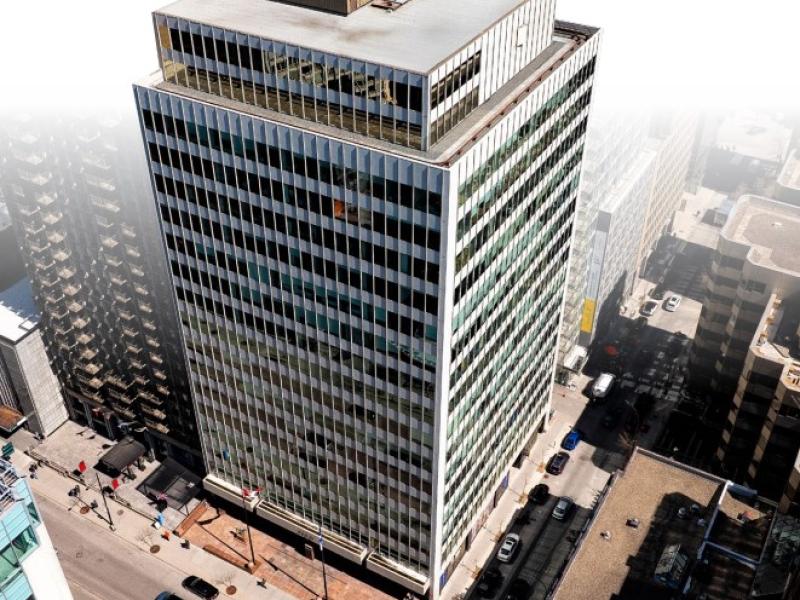
Five prominent real estate executives discussed opportunities and challenges of investing in the United States as part of the Global Property Market conference at the Metro Toronto Convention Centre on Nov. 29.
The current economic uncertainty dominated the conversations, but the executives might have surprised attendees with some of their thoughts.
Kevin Yam, a partner with Iron Point Partners, doesn’t foresee a long period of distressed property sales due to the unfavourable economic conditions. If it does occur, he said it likely won’t be until the second half of 2023 or early 2024.
Iron Point is a private equity firm that targets investments in real estate and other real assets throughout North America and Europe. It has $9 billion US worth of assets under management and has offices in Washington, D.C. and Dallas.
Lighthouse Real Estate Investments managing director Barry Green believes acquisition opportunities for distressed properties will arise midway through 2023, but the window will be brief.
He thinks inflation will taper off more quickly than some economists originally thought and upward pressure on interest rates will be reduced, which will give investors more confidence to consider deals with building owners looking for exits.
Boston-based Lighthouse acquires, develops and manages commercial real estate and has built a diverse $12 billion US portfolio.
Green said Lighthouse attempted to get ahead of the curve late last year by locking in financing rates for as long as it could.
It’s also looking at recapitalization deals with owners of industrial buildings with embedded value who may not want to sell, but could use additional liquidity.
Rents are flattening, costs remain high
GTIS Partners president and founder Tom Shapiro said rents are flattening and costs haven’t come down, which could present problems for developers looking to refinance construction loans.
GTIS is a New York City-headquartered firm with $4.3 billion US of gross assets under management in the U.S. and Brazil.
It’s involved in investing, structuring, design, development and asset management, and oversees projects in residential, office, industrial/logistics and hospitality from concept to completion.
“Homebuilders are in the manufacturing business,” said Shapiro. “They're not like a REIT that can just hold assets.”
This situation is presenting opportunities for companies like GTIS that are more focused on debt than equity, according to Shapiro. He believes industrial and residential are safer asset classes than office.
“Almost every office building in America is going to need a capital solution because of the amount of cap ex that you need, valuation decreases and loans that are coming due,” said Shapiro.
Paul Finkbeiner is the global head of real estate for Great-West Lifeco, an international financial services holding company with interests in life insurance, health insurance, retirement and investment services, asset management, and reinsurance businesses.
He oversees $27 billion in assets under management in Canada, the U.S., the U.K. and Ireland.
Finkbeiner doesn’t think real estate as an asset class is in trouble.
He said that while real estate returns have been “through the roof” over the past 10 years, he always sold the asset class as a strategic hedge against inflation that should represent 10 to 15 per cent of an institutional investor’s portfolio.
Shift in focus from north to south
The Association of Foreign Investors in Real Estate (AFIRE) chief executive officer Gunnar Branson moderated the panel.
Washington, D.C.-based AFIRE acts as a forum for real estate investment thought leadership and caters to international investors focused on commercial property in the U.S.
Branson said institutional investors traditionally wanted to be in U.S. gateway markets like New York City, Washington, D.C., Los Angeles and Chicago.
Now they’re looking at growth-oriented Sun Belt cities — including Austin, Atlanta, Dallas and Nashville — instead.
“The only northern city that seems to be doing well right now is Boston in terms of being on everyone's wish list because they see all the proptech and they want to go there.”
Green also likes Boston, including its number and types of jobs, institutes of higher education, strength in the medical and life sciences fields, growing population, youthful demographics and high barriers to entering the commercial real estate market for those not already invested there.
“We believe the migration to Sun Belt or more affordable, less dense markets will be persistent,” said Yam. “It was happening before COVID and COVID is going to accelerate it.
“But underwriting matters, so you can't just categorically say, 'We want to be in the Sun Belt.' The risk of the Sun Belt right now is really oversupply and pricing. The risk in gateway markets is, in my opinion, much trickier.”
Shapiro, a native New Yorker, said rents dropped precipitously and people left the city during the height of the pandemic because they were less interested in living and working there if they couldn’t take advantage of the nightlife and culture.
People are returning, but Shapiro said major cities need to get a better handle on crime and homelessness.
The Sun Belt markets, according to Shapiro, offer cheaper costs, lower taxes and a better lifestyle.
Sun Belt markets also have problems
Branson pointed out cities like Phoenix and Miami also have big-city problems that are increasing as they grow and are also dealing with infrastructure and climate change issues.
Yam said water shortage issues in Phoenix and flood risks along Florida’s coasts need to be taken into consideration for pricing during the underwriting of developments and acquisitions.
“Phoenix also has a troubled history because it's been a boom-and-bust market several times,” said Green.
“Phoenix is starting to move more towards the centre core, too, in terms of expanding infrastructure, education and building a huge life science campus right in the middle of town and partnering with universities.”
Finkbeiner likes New York City, Boston and San Francisco and said major markets do well because of their diversity of industries and employers.
Finkbeiner said Canadian and European investors are also more attuned to resiliency and environmental, social and governance issues than many American counterparts, which could present problems for some Sun Belt markets.
“The cities in the Sun Belt that are going to do well are cities that can offer all the attractions, the food, the entertainment, the culture and that sort of critical mass of interesting people,” said Green.
The impact of working from home
The usage of central business districts and offices had been changing even before the pandemic, but flexible working hours and increased working from home have now become major factors in business decisions.
“Different cities have different vulnerabilities to work from home,” said Branson. “Government work can be done from home, but maybe not so much in teaching, medical, healthcare and bioscience.
“As you're looking at markets that have kind of a pure CBD, like Toronto, where it's not a lot of residential right in the financial core, those markets seem to be having more problems than the ones that maybe look more like Manhattan, where it's a big mix.”
Branson said one investor in Washington, D.C. is creating flexible properties that can switch back and forth between office and residential uses.
Technology companies which gobbled up space a year ago to provide amenities to lure people back to the office are now dumping it, according to Shapiro.
Finkbeiner said there’s always a flight to quality whenever there’s a downturn in the office market.
“If you bought the best buildings in town, whatever town, you should do well.
"Your rents might be lower going forward because, if we do get ourselves into a problem time like the late ‘80s and early ‘90s, it could be a while before the office market comes back. But the best buildings should do well.”
Opportunities to watch in 2023
Branson said the Inflation Reduction Act of 2022 will bring about the largest investment in sustainability in U.S. history and “real estate owners, operators and developers are going to benefit heavily from this and will require expertise in terms of sustainable construction and management of buildings, perhaps from their Canadian partners.
“So I would watch how that develops and listen to your lawyers and your policy wonks because that is going to be an evolving thing over the next six months and there will be quite a bit of opportunity.”
Shapiro stressed the importance of finding money-making opportunities within companies’ existing portfolios. GTIS is investing in alternative power sources at its properties, particularly solar energy.
Branson ended the session with this statement:
“Something to keep in mind is that every time we've gone through these rough patches and cycles, this is when new careers are built, new leaders are formed and brilliant ideas occur — even as rough as it is. This is the time to define the next 10 years of your business, your career and of this industry.
"So go forth and conquer.”







